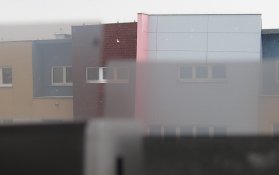JaZ99
Member
- Joined
- Jan 6, 2009
- Messages
- 68
- Format
- Medium Format
Hi,
I've just developed my very first Delta 400 film (120). I souped it together with TMY-2 in Thornton's 2-bath for 2*5.5 minutes. I've noticed something weird.
The base density of TMY-2 and Delta 400 looks the same to me, however, when I see through the clear part, the films look very different. The TMY-2 base is almost clear, but the Delta 400 base gives very soft looking objects. It is like looking at the trees in the mist. I didn't print it nor scan it yet, and I'm wondering: is it normal for Delta 400? Does it affect the resolving power? Or maybe my developer is not a good match for it?
JaZ
I've just developed my very first Delta 400 film (120). I souped it together with TMY-2 in Thornton's 2-bath for 2*5.5 minutes. I've noticed something weird.
The base density of TMY-2 and Delta 400 looks the same to me, however, when I see through the clear part, the films look very different. The TMY-2 base is almost clear, but the Delta 400 base gives very soft looking objects. It is like looking at the trees in the mist. I didn't print it nor scan it yet, and I'm wondering: is it normal for Delta 400? Does it affect the resolving power? Or maybe my developer is not a good match for it?
JaZ












